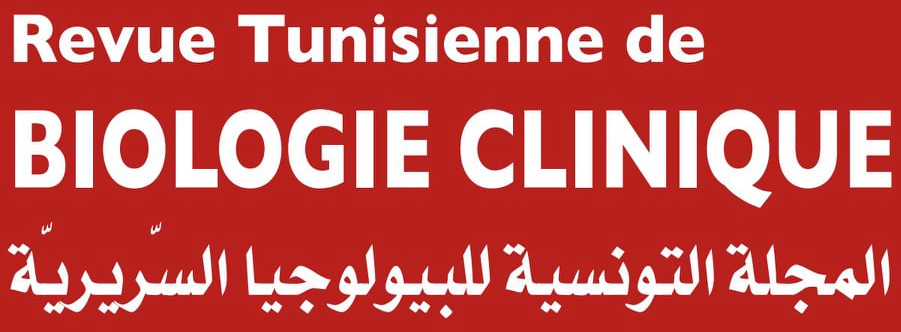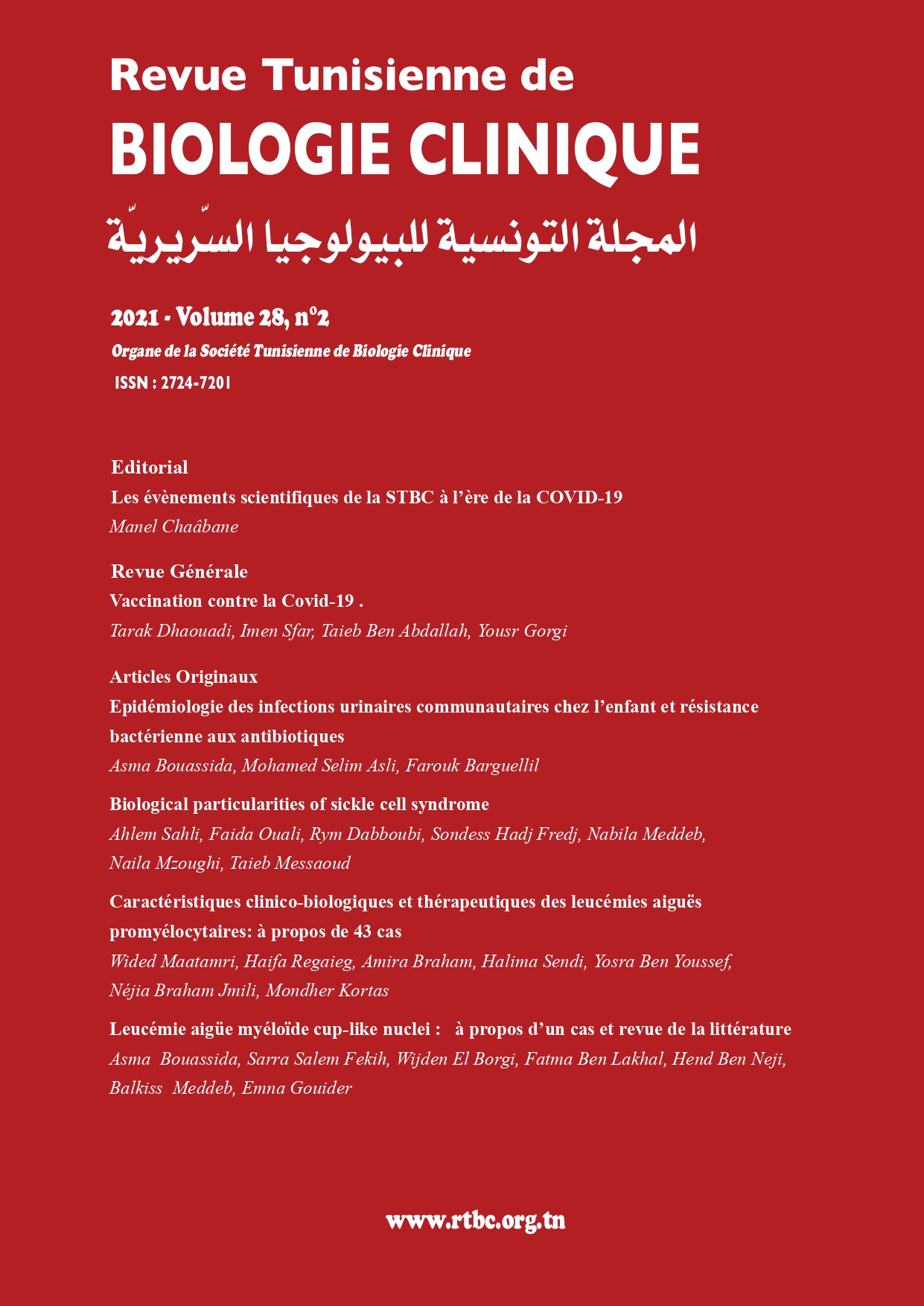Résumé
Introduction: La leucémie aiguë promyélocytaire constitue une entité particulière par ses caractéristiques cliniques, biologiques, cytogénétiques et thérapeutiques. Notre travail a pour objectif de dresser le profil clinico-biologique des leucémies aiguës promyélocytaires ainsi que leur prise en charge thérapeutique dans le Centre tunisien. Matériel et méthodes: Il s’agit d’une étude descriptive rétrospective incluant 43 patients atteints de leucémie aiguë promyélocytaire, diagnostiqués au Laboratoire d’Hématologie et traités au Service d’Hématologie Clinique de l’Hôpital Farhat Hached de Sousse (Tunisie) entre janvier 2005 et décembre 2017. Le diagnostic biologique a été posé sur une étude cytologique (hémogramme et myélogramme) et cytogénétique (caryotype et biologie moléculaire). Le traitement d’induction a été basé sur l’utilisation de l’acide tout transrétinoïque. Résultats: Il s’agit de 43 patients, 22 femmes (51%) et 11 hommes (49%), d’âge moyen au diagnostic de 31,67 ans (±16,3ans). Les motifs de consultation sont en rapport avec les signes d’insuffisance médullaire : un syndrome anémique chez 41 patients (95 %), suivi d’un syndrome hémorragique chez 33 patients (77 %). L’hémogramme a montré une anémie normochrome normocytaire arégénérative chez 41 patients (95 %), une thrombopénie chez 40 patients (93%) aggravée par une coagulation intravasculaire disséminée et une leucopénie chez 14 patients (33%). L’analyse cytologique de la moelle a permis le diagnostic de la leucémie aiguë promyélocytaire chez 41 patients (95%) avec distinction de 4 aspects morphologiques: leucémie aiguë promyélocytaire classique avec présence de corps d’Auer en fagots (32 cas soit 78%), microgranulaire (4cas, soit 9,8%), hyperbasophile (1 cas soit 2,4%) et mixte (4 cas soit 9,8%). Selon le score de SANZ, les patients sont classés en différents stades de risques : 10 patients à risque élevé, 23 à risque intermédiaire et 10 à risque faible, bénéficiant tous de l’acide transrétinoïque et traités selon l’un des deux protocoles : LPA99 ou AIDA. Le taux de rémission complète post induction était de 91% et la survie globale à 2 ans était de 72%. Conclusion: Bien que les résultats concernant l’évolution des patients soient satisfaisants, des efforts supplémentaires sont à déployer afin d’améliorer le pronostic de ces patients.

Ce travail est disponible sous la licence Creative Commons Attribution 4.0 International .
(c) Tous droits réservés Wided Maatamri, Haifa Regaieg, Amira Braham, Halima Sendi, Yosra Ben Youssef, Néjia Braham Jmili, Mondher Kortas 2021

